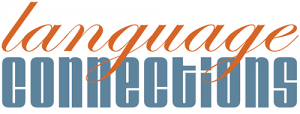In the manufacturing industry, precision is crucial. A single mistake in a user manual translation can result in costly product recalls, safety issues and even legal consequences. The stakes are particularly high when dealing with content quality requirements, where compliance is mandatory. Despite these risks, many manufacturers underestimate the impact of seemingly minor translation errors, leading to significant operational and financial setbacks. Ensuring linguistic accuracy in manufacturing documentation requires expertise, precise quality control and reliable manufacturing translation service. To better understand those efforts, here are 4 examples of the most overlooked errors in manufacturing translation.
The most overlooked user manual translation errors
Error 1: Measurement mismatches
One of the most common and dangerous translation errors in the manufacturing sector stems from differences between the metric and imperial measurement systems. A notable real world example comes from Ariane 5, a European space launch vehicle produced by Airbus and its partners. In 1996, a software error from mismatched number formats caused the rocket to go off course and self-destruct. The incident is a cautionary tale for all precision driven sectors.
In industrial settings, similar mistakes can lead to incorrect machine calibrations, faulty assembly lines or even major equipment failures. To prevent such issues, manufacturers should implement standardized unit conversion processes and consult specialized manufacturing translation service providers that ensure consistency in numerical values across all languages. This includes everything from technical manuals to manufacturing website translation, which plays a key role in reaching global markets. Additionally, using a professional label translator helps prevent critical labeling errors, supporting compliance and user safety in highly regulated industries. By investing in the right language solutions, manufacturers can operate more efficiently and expand confidently worldwide.
Error 2: Misuse of technical terms
Manufacturers often rely on complex, industry specific terminology, making accurate translation complicated. A good example of terminology misuse involves the launch of a German manufactured medical device in Spain. The Spanish translation of ‘non-repositionable’ was mistakenly translated as ‘repositionable’, leading to widespread product misuse and subsequent patient injuries.
To avoid such pitfalls, manufacturers must work with translators who have deep expertise in the relevant industry and understand the nuances of specialized terminology. Using manual translation services can facilitate the process and ensure consistency and accuracy. Additionally, investing in UI/UX translation services as well as IFU and packaging translation helps to maintain clarity in digital interfaces and product documentation, reducing the risk of translation errors.
Error 3: Instructions lost in translation
When it comes to safety, there is no room for errors. One particularly infamous case of mistranslation in instructions occurred in 2013, when a Japanese forklift manufacturer recalled thousands of units due to misinterpreted safety warnings in its English manual. The incorrect translation led to operators misunderstanding critical hazard warnings, increasing workplace accidents.
Safety instructions must be crystal clear and culturally relevant. Standardizing safety messages across all languages through structured technical manuals localization process helps ensure clarity. Additionally, manufacturers should use universally recognized safety symbols and implement multilingual manufacturing industry translation solutions to maintain uniformity across different markets. Compliance with the EU Machinery Directive 2006/42/EC’s translation requirements is essential, as it sets key safety communication standards. Similar directives in other countries may also impose specific translation obligations, depending on where the manufacturer operates.
Error 4: Cultural and linguistic misinterpretations
Beyond technical accuracy, cultural sensitivity plays a crucial role in translation. A notable example of cultural misinterpretation occurred when a German industrial equipment manufacturer expanded into China. The company’s logo contained a hand gesture that was considered offensive in Chinese culture, leading to backlash and an expensive rebranding effort.
Localization goes beyond word-for-word translation, it requires a deep understanding of cultural context. By incorporating multilingual support for industrial companies, businesses can ensure their messaging resonates with local audiences. Investing in professional manufacturing translation providers that prioritize cultural adaptation can prevent costly rebrandings and maintain brand integrity in global markets.
How quality user manual translation can prevent errors
Translation errors in manufacturing can have severe consequences, ranging from safety hazards to legal issues. To minimize these risks, manufacturers must prioritize quality translation services, such as provided by Language Connections. With over 30 years of experience, Language Connections draws on a global network of 4,000 professional linguists and offers services in more than 100 languages, consistently meeting the diverse and complex needs of the manufacturing industry. They guarantee precision and clarity in every translation so that you can confidently expand into new markets.
Language Connections Inc.
22 Goddard Circle
Brookline, MA 02445
Phone: +1-617-731-3510
Email: service@languageconnections.com


